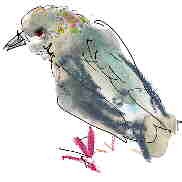Norman
Allan | ||||
| A
note on Nature, Nurture and Gorginski's Mice: In determining "emotional" tone, it's the "vibe" (not genes) that count. Reg Gorginski was working with David Ader, the father of "psychoneuroimmunology". David Ader had shown that if you take mice and feed them enough immuno-supressent to kill half their white blood cells - he gave them the drug, cyclosporane along with a dose of saccharine - and then you wait for their white cells to recover, and then do it again, give enough cyclosporane to kill half the white cells, along with saccharine, and let them recover. Then a third time you give them just saccharine, and half their white blood cells died. A classic Pavlovian conditioning of the immune system. This discovery, this field was called psychoneuroimmunolgy. When Gorginski was working with Ader, they were looking at tumor-prone mice. They wondered why tumors manifested in some of these tumor-prone mice and not in others. They looked at a measure of the autonomic tone called "emotionality"* and found that tumors tended to manifest in "emotional" mice and not in their calm brethren. Gorginski then started breeding from the most emotional and the least emotional mice. He did this for eight generations establishing two distinct populations, one of high-strung and the other, calm mice. In the ninth filial generation he cross-foster the pups: emotional pups were fostered and given suck, by calm mothers, non-emotional pups were nursed by emotional mice, and it is who nurse (not who sires and bares) the pups that determines its emotionality. It's the vibes of its mother that determines its "emotional" tone!
* "emotionality" is measured by experimental psychologists with an Open Field Test: you put the animal in a novel open space and measure how many times it pees and poops in the first five minutes. This is a crude estimate of the "sympathetic tone" (the degree of adrenalation/of fear) and is taken as a measure of "emotionality".
However:
in an article on Tame
Foxes in the National Geographic (March 2011): first, they found they could
tame/domesticate foxes after rather few generations (they start wagging their
tails and loving humans). Then, crossfostering tame and wild foxes, it was the
genetics that counted here. |
 |